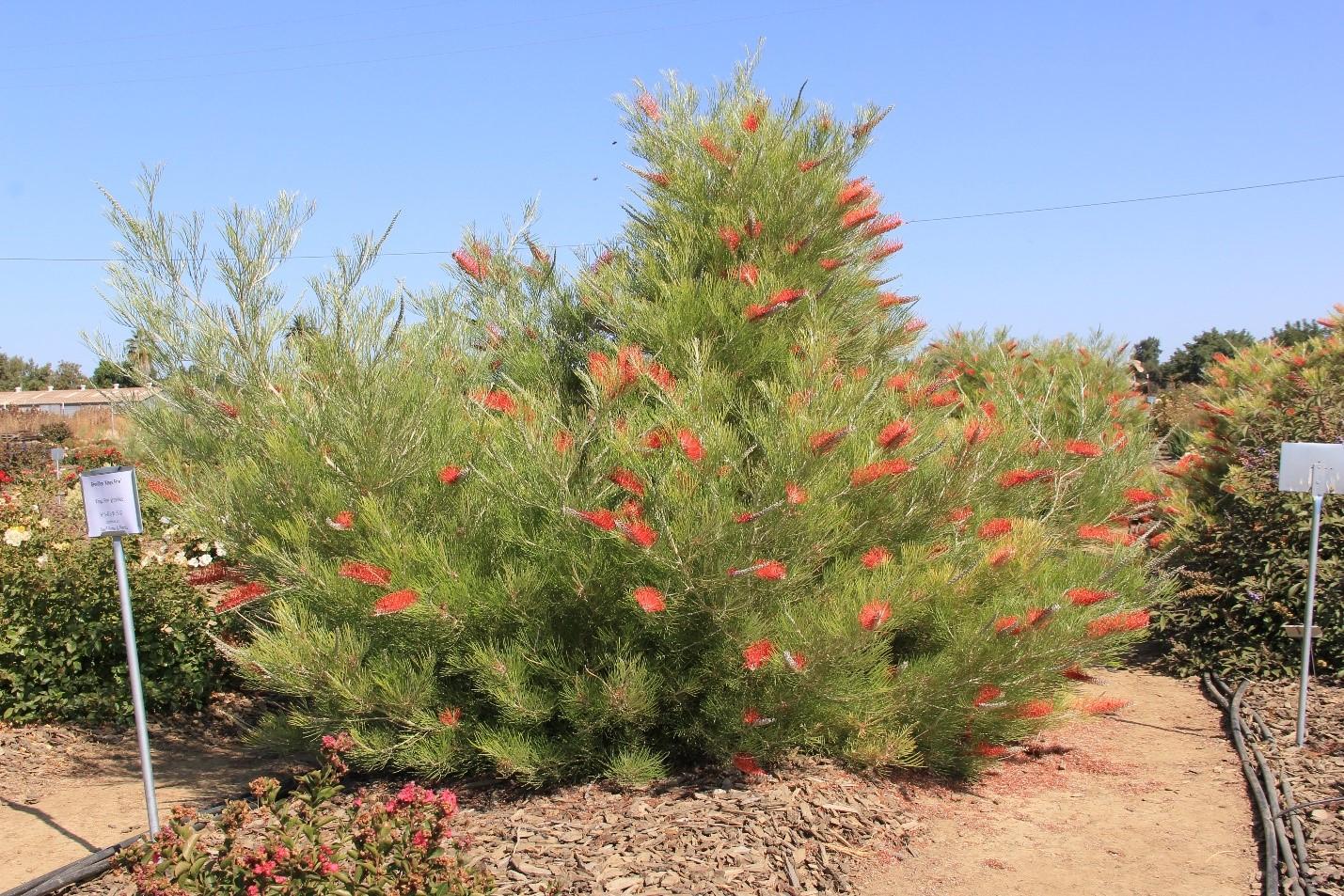Kings Fire Grevillea
Grevillea 'Kings Fire'

Summary
Researchers planted #1 sized material at both sites in October 2017. During the winter of 2017-2018, most (20 of 24) plants perished at UC Davis. Researchers were able to source #5-sized replacement plants for UC Davis and this cultivar was replanted in early May 2018. Adversity occurred at both sites. At UC Davis, the potting medium in the #5 containers deteriorated during establishment resulting in the upper portions of the root ball being exposed. Since the “skirt” of branches on this plant went to the ground, this went unnoticed until mid-winter when strong north winds caused substantial stem breakage and entire plants to lean over due to the lack of solid root ball anchorage. After researchers discovered the issue, plants were staked as needed, though some stem breakage continued throughout the growing season at both sites. In Irvine, plants became chlorotic and stunted, again as a result of the reclaimed water. While mortality occurred at UC Davis (n=3), the rate of mortality at South Coast REC was 11 individuals at the beginning of the deficit period, and 17 of 24 had perished by the end of the trial. That said, despite the issues mentioned there was a wide disparity in performance between UC Davis and South Coast REC, with Kings Fire performing well and scoring highly with open house participants in Davis (Table 10b).
At UC Davis there was no difference in growth between treatments (Figure 5b). Both researchers and open house participants rated ‘Kings Fire’ highly (Tables 10a and 10b). The continuous bloom from the cultivar was popular with bees, hummingbirds, and people. During the Fall Open house, ‘Kings Fire’ was one of the top three rated plants based on overall appearance ratings and participants’ favorite plant of the event. Based on the data collected, researchers recommend ‘Kings Fire’ be irrigated on low water in WUCOLS zone 2. Cultivation recommendations include checking root structure when planting and pruning out potential branch splits to prevent damage and maintain a pleasing shape. Due to the amount of mortality we were unable to collect enough data to make an irrigation recommendation for WUCOLS zone 3, but do not recommend it for irrigation with reclaimed water.
Basic Info
| Submitted by: | Star Roses & Plants |
| Trial Exposure: | Sun |
| Year evaluated: | 2019 |
|
Height & Width
(after 2 years):
|
105" x 69" - UC Davis
21" x 16" - SCREC
|
|
Reported Height & Width
(at maturity):
|
5-6' x 5-6' |
| WUCOLS plant type: | S |
| Water Needs & WUCOLS Region: |
Low - Region 2
NR - Region 3
|
|
Mean Overall
Appearance rating:
(1-5 Scale, 5 is highest)
|
4.8 - UC Davis
2.1 - SCREC
|
|
Flowering Months
|
April-Oct. - UC Davis
April-Sept. - SCREC
|
Growth and Quality Data
Click Here for Complete Data Set

